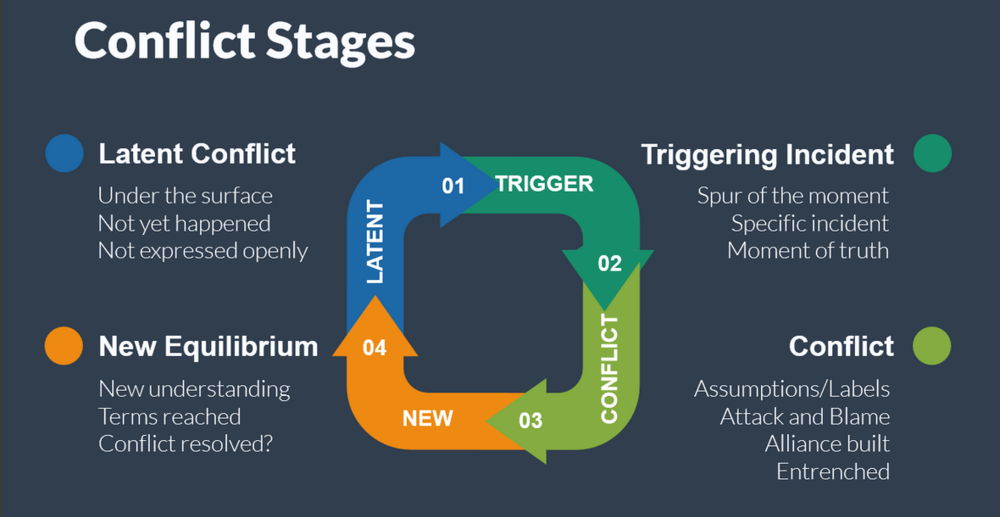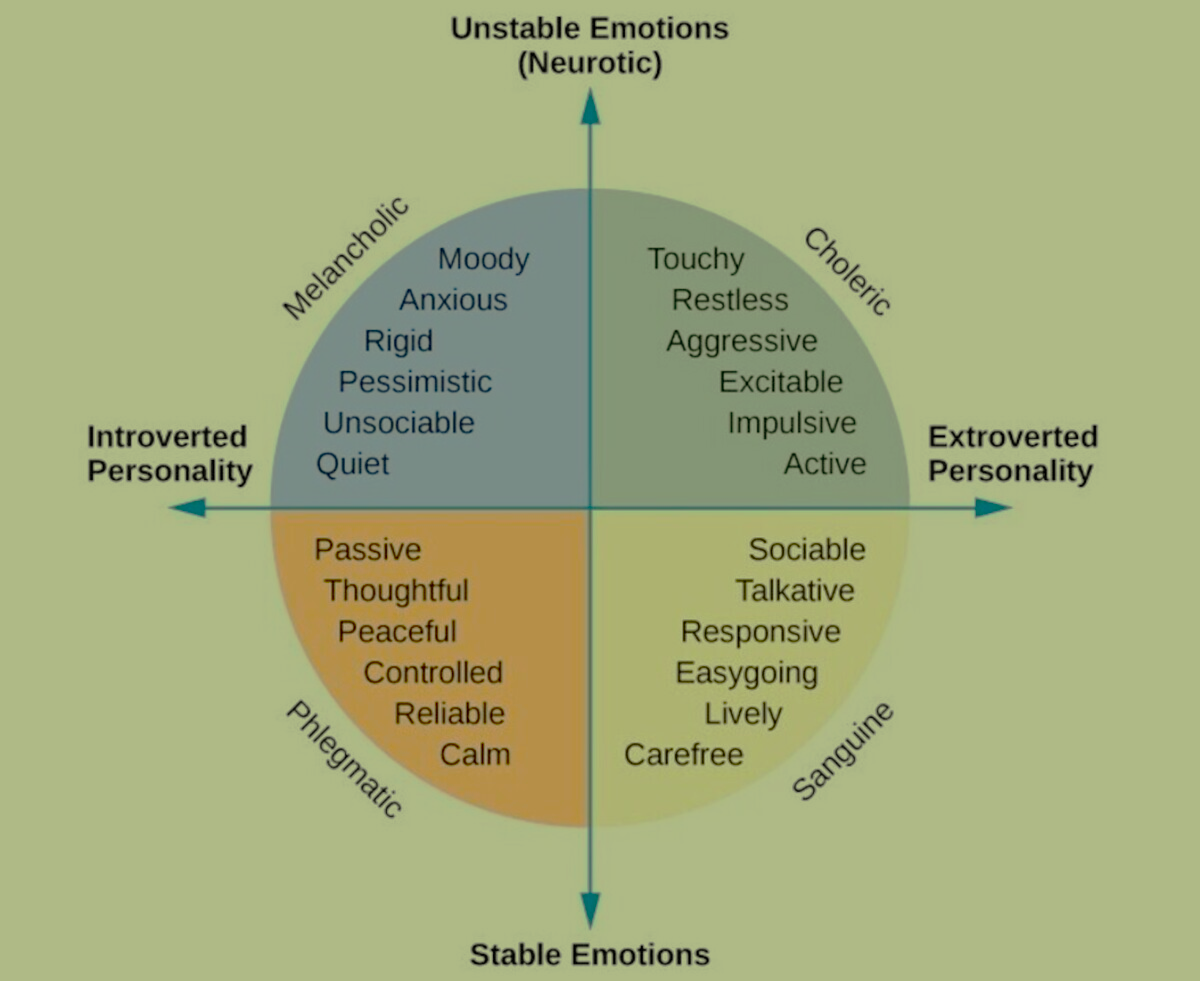.png)
Circle of Conflicts
The Circle of Conflict is a visual representation of the different stages or elements involved in conflicts. It was created by the Canadian mediator Michelle LeBron to help people understand the complexity of conflicts and to assist in resolving them.

The Circle of Conflict consists of five stages, which are as follows:
Latent Conflict: The first stage is the latent conflict stage, which refers to the period before a conflict becomes apparent. During this stage, there may be tension or dissatisfaction between the parties, but no actual conflict has occurred yet.
Triggering Event: The second stage is the triggering event stage, where a specific event or incident occurs that leads to the conflict becoming overt. This could be something like a misunderstanding or miscommunication, a violation of a boundary or expectation, or a clash of values or interests.
Actual Conflict: The third stage is the actual conflict stage, where the parties involved are actively engaging in conflict. This could involve verbal or physical aggression, passive resistance, or other forms of confrontation.
De-escalation: The fourth stage is the de-escalation stage, where the parties begin to move away from the conflict and seek a resolution. This may involve negotiations, mediation, or other forms of conflict resolution.
Resolution: The final stage is the resolution stage, where the conflict is resolved and the parties reach a mutually acceptable agreement or solution.
The Circle of Conflict model is useful for understanding conflicts in a holistic way and recognizing the different stages of conflict. By understanding the different stages of conflict, individuals can work towards resolving conflicts more effectively and prevent them from escalating in the future.
Transformative approach
The transformative approach is a conflict management approach that aims to transform the way people think about and approach conflicts. This approach focuses on empowering individuals and helping them recognize their own needs, values, and interests, as well as those of others involved in the conflict.
The transformative approach emphasizes the importance of open communication, active listening, and empathy in resolving conflicts. It encourages individuals to move beyond positional bargaining and instead focus on understanding the underlying needs and interests of everyone involved in the conflict.
This approach also emphasizes the importance of addressing the emotional and psychological dimensions of conflicts, as well as the practical issues at hand. It recognizes that emotions can play a significant role in how conflicts escalate and how they are resolved, and it encourages individuals to recognize and manage their emotions in order to resolve conflicts more effectively.

The transformative approach is often used in situations where there is a high degree of conflict, such as in cases of divorce or workplace disputes. By encouraging individuals to focus on their own needs and interests, as well as those of others involved in the conflict, this approach can help individuals find more creative and collaborative solutions to conflicts, while also improving relationships and reducing the likelihood of future conflicts.